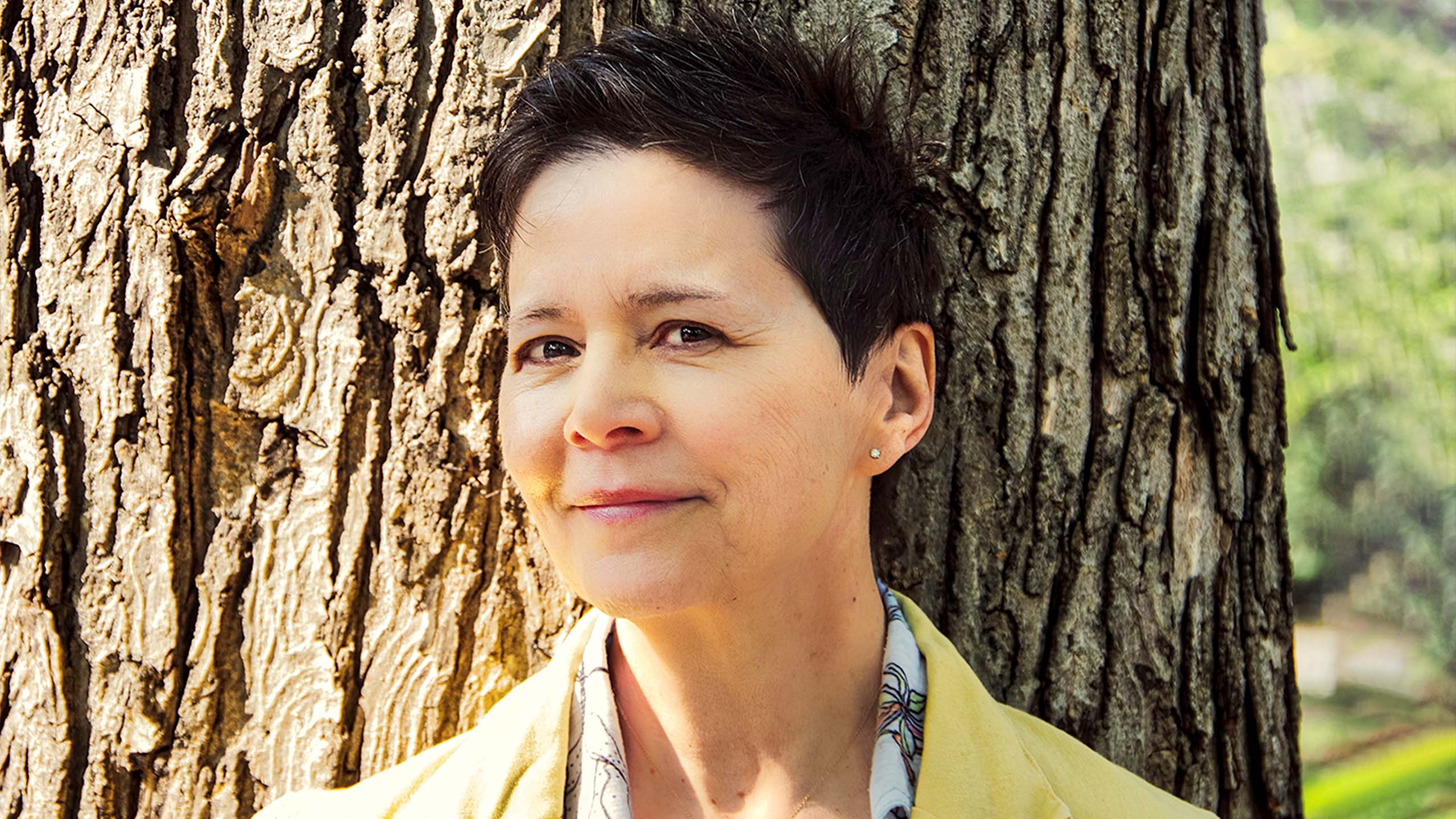Fayne, out October 11, is the much-anticipated fourth novel from award-winning author and playwright Ann-Marie MacDonald. Her first novel, Fall on Your Knees, which won the Commonwealth Prize and was short-listed for the Giller Prize, amongst numerous other accolades, has come to be recognized as a cornerstone of queer Canadian literature. MacDonald has called Fayne her “queerest book yet.”

Credit: Courtesy of Penguin RandomHouse Canada
Like Fall on Your Knees, it’s a sprawling novel set at the turn of the century, driven by the unravelling of a knot of dark family secrets. In Fayne, MacDonald has succeeded in crafting a narrative that maintains a propulsive pace throughout its whopping seven-hundred-plus pages. Unfortunately, it sometimes sacrifices in-depth investigations of the nuances of gender, sexuality and identity that feel central to this story in favour of creating suspense.
Fayne revolves around the inhabitants of the titular fictional estate, which straddles the border between England and Scotland. Like many proto-feminist Victorian gothic classics, the story follows a feisty, precocious protagonist born into a world of crumbling aristocracy. Direct references as well as allusions to these novels are scattered throughout Fayne. For example, the protagonist’s friend urges them to read Jane Eyre between repeated appearances of a ghostly face in the window overlooking the Wuthering Heights-esque moor where Fayne is situated.
The descriptions of the subtle ways the landscape changes with the seasons are some of the most immersive in the book. The mud of the moor that surrounds Fayne has special healing qualities; however, it is also dangerous to people who do not know how to navigate it; the porous earth releases noxious gasses and collapses into sinkholes that can swallow and drown people who aren’t familiar with the terrain. This unique setting, thanks to MacDonald’s rich description, feels deeply peaceful in moments and terrifyingly, starkly empty in others.
As in many of the Victorian gothic classics the novel references, the fate of the protagonist’s family’s status and retention of their property is central to the plot and depends on strategic marriage and the birth of an appropriately gendered heir. However, in a departure from the genre, Fayne’s protagonist, to whom we are introduced as Charlotte, is revealed to the reader to be intersex roughly a hundred pages into the novel. Many of the numerous plot twists that follow hinge on the people who surround Charlotte (who later uses the names Charles and Charlotte interchangeably) misunderstanding and/or attempting to control Charlotte’s gender presentation, in part because of how it will impact the title of the estate, which must be passed on to a male heir. It’s suggested that Charlotte being intersex is related to their connection to Fayne and possibly the result of their mother eating magical moor mud during her pregnancy. The magical element of Charles’s non-normative gender is one of the many parallels between MacDonald’s protagonist and Virginia Woolf’s Orlando, along with ties to nobility, a haughty personality and a passion for reading. While the references to the work of famous British writers that are intricately woven into this novel enrich it, the choice to link Charlotte’s intersex identity to the supernauturally tinged moor, risks fetishizing intersexuality as magical and otherworldly.
“As the novel continues, it becomes clear that an incredibly intricate and disturbing web of lies has been spun to conceal the nature of Charles’s sex from them.”
This brings me to another concern with the choices made around the depiction of Charles’s intersexuality. Above, I use the word “revealed” to describe the moment we learn that Charlotte is intersex because, while Charlotte has had their sex intentionally and cruelly concealed from them by the adults in their life, MacDonald has also strategically kept this information from the reader in order to create suspense. As a child, Charlotte is told she can never be in public because she has a mysterious condition that makes her vulnerable to infection and illness; however, MacDonald plants many clues that there is something dishonest about the circumstances under which Charlotte has been isolated from society. As the novel continues, it becomes clear that an incredibly intricate and disturbing web of lies has been spun to conceal the nature of Charles’s sex from them.
One could argue that the choice to conceal the fact that Charlotte is intersex from the reader is meant to make the reader empathize with Charles—helping the reader relate to the feelings of disorientation and distrust Charlotte experiences as they come to understand everything that has been kept from them by the people they care about. This reading could be reinforced by the fact that the moment the reader comes to understand that Charlotte is intersex, is a quiet and reflective passage. The pacing of this scene gives it a special weight because in spite of the novel’s breadth, and the fact that most of it takes place in a nearly empty estate on a barren moor, Fayne is jam-packed with unexpected betrayals and dastardly deceptions. So, this pause feels as though it is attempting to make space for a meaningful investigation of Charles’s relationship to their gender.
MacDonald, writing from a pubescent Charlotte’s perspective:
I folded my hands behind my head and relaxed—that is, ninety-eight percent of my body relaxed; all but that dissenting bit of flesh that waxed, every day more intractable. By turns lazy and limp, then alert and headstrong. “No,” said I, addressing it. There it stood amid the fine curls between my legs, chipper and devoid of malice. This negligible bit of me—long a minor distraction—had come to exert disproportionate claim upon my attention. But I was fond of it—protective even, for were it a person, it would be given to ecstatic leapings from the nearest precipice. Fond? I loved it. It was part of me, yet separate too, like an external little beating heart—nay, like another self; as if within it lay a little mind and soul and history … I wondered if everyone’s—that is, every female person’s—appendage was so troublesome and so dear. And did everyone call it a prickle?
This scene has the potential to be a moving moment of self-discovery and self-appreciation; however, the deliberate choice to keep the fact that Charles is intersex from the reader until then detracts from the empowerment Charlotte is feeling. The scene lands more like the revealing of a salacious secret rather than a moment of genuine empowerment because the reader is distracted by how Charles’s identity might help explain the elaborate ruse that has been created to secure the estate.
Because there are so few published narratives about intersex people that find mainstream attention, and even fewer by intersex authors (as an avid reader of queer Canadian fiction, I can’t think of a single novel by an openly intersex author that has recently received mainstream media attention, or has been recognized by large literary awards in Canada), it feels especially important that Charlotte’s gender and sex be handled with respect. To be clear, the issue is not that an intersex character is at the centre of a fast-paced story full of intrigue and suspense, but that at times, their intersexuality feels like a narrative device facilitating that intrigue and suspense.
There are moments in this novel that deftly illuminate how painful it can feel to have pressed upon you a set of gendered expectations that don’t align with your sense of self. Some of the most striking moments being when Charlotte is forced to wear restrictive women’s clothing like hoop skirts and bodices.
Fayne is a mammoth book with momentum. Lovers of Victorian gothic fiction will appreciate how MacDonald pays homage to the genre both through the novel’s vividly eerie setting, and the allusions to many of the classics peppered throughout. However, in places it feels as though the protagonist’s intersexuality is used as a plot device and that makes it difficult to fully believe in Charlotte as a character, and to appreciate the rich world MacDonald has created.


 Why you can trust Xtra
Why you can trust Xtra


